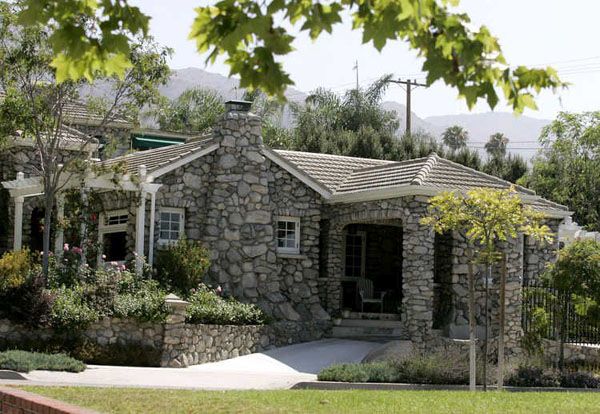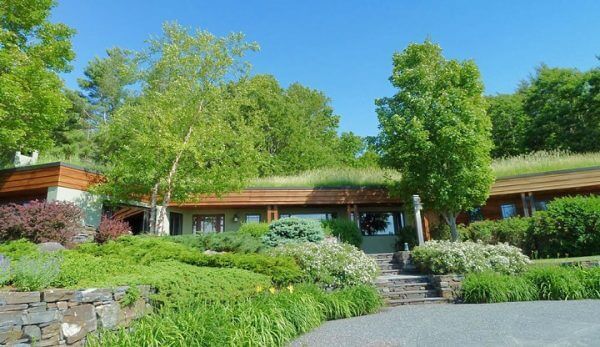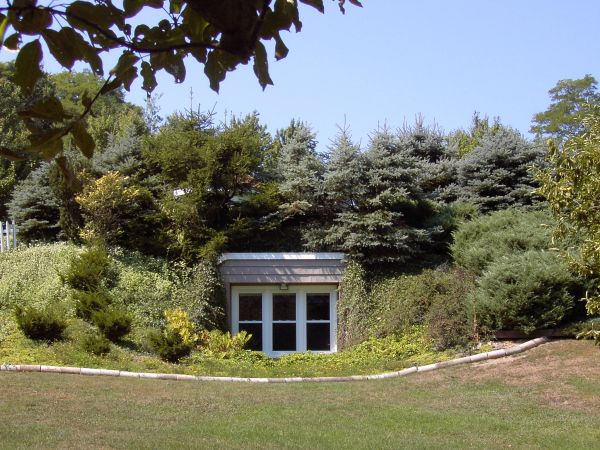Earth-sheltered homes like underground houses aren’t just eco-friendly, in addition, they are soundproof, energy-efficient, and fire-resistant as well. Furthermore, you can also easily lift them above the ground. Then you would be able to use Earth-sheltered homes such as underground dwelling are soundproof, energy sufficient and fire-resistant. We can also raise them above the ground. When you use them above the ground, it is better to allow ventilation and natural sunlight. Nevertheless, the picture isn’t as rosy as it seems as you might have to face some challenges as well. Therefore, it is advisable if your make earth-sheltered homes only in places where the soil is permeable enough for them.
More benefits of earth-sheltered homes
The advantages of earth-sheltered homes are numerous. They are examples of sustainable architecture which are built using earth as a chief element. They can help to reduce heat loss and thus help in maintaining a steady indoor temperature, in all climates. This can help in lowering your energy bills and save you a ton of money. They also provide protection against storms and tornadoes. Earth-sheltered homes have the added advantage of being sound proof, as earth greatly reduces noise pollution. These homes maintain your privacy and are usually quite beautiful.
Types of earth-sheltered homes
There are three methods of constructing an earth-sheltered home.
Earth-berming
In this method, the earth is piled on the exterior walls of the house, sloping away from the house. The roof may or may not be covered with earth and the house may have windows on one or more walls.
In-hill construction
The house is set into a slope or hillside and it has one exposed wall and all other walls are embedded into the slope.
Underground / fully recessed construction
The ground is excavated and the house is set in below, completely underground. You could build a home in underground caves, old mines and abandoned missile silos too.
Advantages of earth-sheltered homes
The advantages of earth-sheltered homes are numerous. It is commonly assumed that earth-sheltered homes are dark and buried in and would be extremely unpleasant. But the truth is, earth-sheltered homes are surprisingly peaceful dwellings, sanctuaries from the noise of the outside world. Other advantages are:
Steady temperature
Due to the geothermal heat of the earth, the temperature of these homes which are constructed using eco-friendly architecture methods, is maintained at a comfortable 50 F throughout the year. The earth’s mass retains and absorbs heat and this heat is released to surrounding areas, such as earth-sheltered homes. But this process of earth’s temperature change happens very gradually, known as ‘thermal lag’. The earth provides a very stable temperature to these homes due to ‘thermal lag’ even though the external temperatures may fluctuate greatly. The use of passive solar techniques, diminished chance of air infiltration (warm air cannot escape and cold air cannot penetrate) in earth-sheltered homes ensures homeowners saving thousands of dollars in energy bills and reducing carbon emissions, due to the minimal use of extra heating and cooling devices.
Low maintenance bills
Earth-sheltered homes have to extra sturdy and they are usually made out of sturdy materials like brick and concrete. These materials ensure the house stays strong for a 100 years and as there is no traditional roofing involved either, your maintenance costs due to the passage of time and weather conditions are almost nil. There is no painting or siding costs that you have to bear as 90-100% of the house is covered by earth. You can use this money saved for a nice vacation instead!
Storm safety
Tornadoes and hurricanes and torrential rain have no effect on an earth-sheltered home. All this happens above ground, while you are safely inside your home underground. Fires too cannot harm such houses and lightning will not strike a house that is level with the ground.
Naturally sound proof
The earth efficiently blocks out all outside noise. This is a relief as you no longer have to listen to traffic noises, or undergo the pain of listening to construction noise nor the sounds of neighbors fighting. These houses are perfect for those living near airports, as they will no longer be bothered by the constant sound of planes landing and flying overhead. The natural sound proof of an earth-sheltered home provides a much needed peaceful and relaxed environment within the home. You no longer have to rush to the mountains to enjoy the sounds of silence.
Aesthetically pleasing
Earth-sheltered homes are usually extremely pretty on the inside and outside. The earth covered roof and walls can be used to plant beautiful flowers or have a nice lawn. The front façade can be decorated to suit your style and taste.
The benefits of an earth-sheltered home are many. It is a sensible choice for someone looking to reduce their carbon footprint, as well as saving a good amount of money down the line.
Eco-friendly building materials similar to earth-sheltered homes
The best thing is that all these building materials are found in nature and hence are available in abundance. Let us have a look at the seven eco-friendly building materials that are sourced from nature.
1. Bamboo

One of the important and highly reliable natural resources is Bamboo. Moreover, it’s already in fashion, Earlier people used to have center tables made of bamboos, sheds and small huts in courtyards made of bamboos. But now, for last decade a fast trend is following and catching people’s eyes and vows is Bamboo. Now in American and African countries, not only in urban areas but in suburbs and villages you can easily find houses wholly made of bamboo. It’s now used in homes and as a piece of decorative interior designing.
It might startle you to learn that Bamboo is now being used in some Asian countries to construct highways and bridges. In terms of renewability, it’s better than many other plants for example timber. It grows in a shorter cycle. Just make sure when we are using bamboo for construction it is treated with some chemicals which protect it from getting bugged with insects and becoming waterproof. Nevertheless, its durability is of a respectable amount of time.
2. Cob
The massive or monumental building system established on a concoction of sand, clay, and straw is defined by the term Cob. Since ages, this form of infrastructure building is taking place where mud building which uses no conformity, no wooden framework takes place. In different methods of building houses with natural resources, Cob-like mixes are also used as plaster or filler, such as earthbags, adobe, timber frames, straw bales, and cordwood. So once you start experimenting, you realize that earth is a primary constituent in House Building.
3. Rammed Earth

Image Source : m.wsj.net
Nature is not biased. There is a good population of people who can’t afford bamboo or to them other material like timber, cob is unavailable. So the builders who have the resources use what they possess. They can build a rammed earth home. In this type of house building in a temporary wall form, a mixture of soils is packed down and that gives shape to the mixture. The form has to be wooden and it should be firm enough to hold onto the rambling’s densification. There are some important factors one needs to hold reserve while making a rammed earth home. Rammed earth walls are made with a different type of soils but too much of clay may result in cracks on the surface of the wall and they may intensify with time and end up annihilating the wall.
4. Earthbags
If you ever pass through an army cantonment area you will find bunkers carved out of stacked sandbags. It shows how potent these sandbags are that they are used by Army people. They are treated as equally strong as Brick buildings. The question arises can we make a house of dirt and sandbags. The soil in the bags presses down each layer of bags heaped earlier. We don’t need to mortar for that. These houses are generally domed roof. The sandbags are gradually stepped min until they meet up and a domed shape roof is obtained. And the durability, the densification makes these bags so tightly knit that even a rove won’t affect its durability.
5. Rocks

Image Source : wesclark.com
No doubt that it’s convenient for everyone to make houses with shaped bricks and concrete slabs, but it’s also possible to construct stylist homes using rocks which are naturally available. Rock walls are better in having thermal mass as they can absorb the outside temperature, store it in and then radiate it through the house. These rocks can be plastered with earthen plasters using sand, clay, and lime.
6. Adobe
One of the oldest methods of building, Adobes are the houses built with earth. Adobe is made by using a mixture which is made by clay, water, sand, and sometimes straw in the form of a brick. After they are put in mould they are kept in sun to get dried and then the, moulds are removed. This process may take sometime and after they are dried the brick shrinks and you can check its strength so that they don’t crack once after they are installed in the wall. This process needs dry climate. Adobe bricks are laid like common masonry and are stacked. We need mud mortar to affix bricks. The adobe houses are highly vulnerable and it’s not suggested to have adobe houses in earthquake-prone areas.






